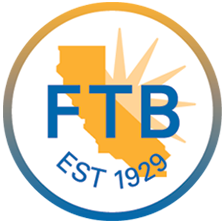
Nonprofit organizations have long relied on specific retirement plans to help their employees prepare for the future. However, changes in regulations, economic conditions, and workforce dynamics are driving significant shifts in how these plans are structured and managed.
Some provisions of 2022’s SECURE Act 2.0 (a follow-up to the SECURE Act of 2019) have been in force for over a year. This includes several that affect 403(b) retirement plans. If your not-for-profit offers staffers a 403(b) plan, you likely made some minor changes in 2023. And may have made more significant ones on January 1, 2024.
A few additional provisions are scheduled to become effective in 2025 and 2026. Get ahead of these shifts and learn more about how your nonprofit retirement plans are changing.
Key Ways Nonprofit Retirement Plans Are Changing
The past few years have seen a shifting landscape in the retirement plan marketplace due to significant regulatory changes. This has been particularly true with the significant nonprofit retirement plans changing. As many nonprofits continue to traverse these new regulatory changes and determine how to best utilize them, there are several key provisions that are generating discussion and excitement with this client segment.
1. Enhanced Focus on Financial Wellness Programs
Nonprofits are increasingly incorporating financial wellness programs into their retirement plans. These programs go beyond the traditional focus on savings and investments. Instead, they also offer employees tools and education to manage their overall financial health. This trend is driven by the recognition that employees’ financial stress can impact their productivity and retirement readiness. Financial wellness initiatives may include personalized financial planning, debt management resources, and workshops on budgeting and saving.
2. Adoption of Pooled Employer Plans (PEPs)
Pooled Employer Plans (PEPs) are gaining traction in the nonprofit sector. These plans allow multiple employers to pool their retirement resources into a single plan. This is one of the significant ways nonprofit retirement plans are changing as it reduces administrative costs while offering better investment options to employees.
PEPs make it easier for smaller Nonprofits to offer competitive retirement benefits. And this can be a significant advantage in attracting and retaining talent in a sector known for budget constraints.
3. Shift Toward Sustainable Investment Options
There is a growing demand for sustainable and socially responsible investment options within nonprofit retirement plans. Many employees in the nonprofit sector are driven by a commitment to social good. Therefore, they want their retirement savings to reflect these values.
As a result, nonprofits are increasingly offering investment options that align with environmental, social, and governance (ESG) criteria. This allows employees to invest in a way that supports their ethical beliefs.
4. Increased Flexibility in Retirement Plan Design
Another way nonprofit retirement plans are changing is that it’s moving more toward flexible retirement plan designs. Doing so helps accommodate the diverse needs of their workforce. This includes offering multiple retirement plan options, such as 403(b) and 401(k) plans, as well as varying contribution levels and vesting schedules. Flexibility also extends to allowing employees to choose how their contributions are allocated among different investment options. It provides greater control the employees’ retirement outcomes.
Conclusion
The above ways nonprofit retirement plans are changing reflect a broader trend toward creating more comprehensive retirement plans. As such, the plans more closely meet the evolving needs of employees in the nonprofit sector. By staying ahead of these trends, not-for-profit organizations can better support their workforce and ensure that they are prepared for retirement.
You may also enjoy reading: Alternative Investments Risks and Returns







